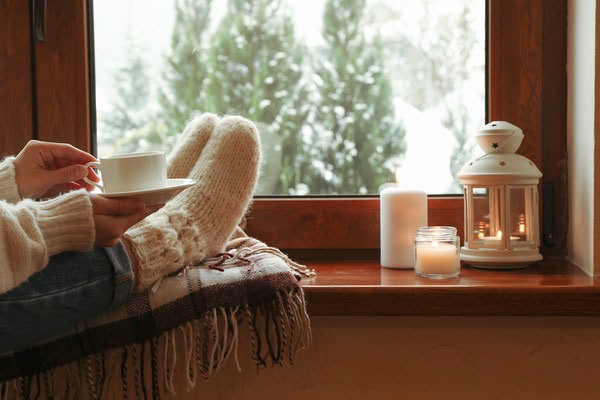Are you ready to prep your home for winter? While very few of us are ever truly ready for the bitter, cold weather to kick in, the sad truth is it’s on its way. That means you not only have to brace yourself, but you need to get your home set as well. Canadian winters can certainly put up a bit of a fight sometimes. Here are some things you can do to keep your home secure and comfortable during this season!
Prevent ice damage
Ice is an unavoidable part of winter in Ontario. While we can’t get away from the ice, that doesn’t mean we can’t dodge the potential damage it can cause. Ice can damage your roof if you have any weak or old shingles, potentially causing leaks or even making the shingles blow off. If you didn’t properly clean out your gutters or eavestroughs to get rid of fall leaves, ice buildup on top of this clogging pile will cause extreme weakening of the eavestroughs, resulting in drooping or even breaking. The good news is this is pretty easy to prevent. Before the first snow hits, check your eavestroughs and gutters one last time to make sure there’s no debris stuck in there. Think about the age of your roof, and ensure it’s strong and can withstand another windy, icy winter.
The other big ice danger comes on your driveway or walkway, which can turn our properties into lethal skating rinks. Preventing ice damage includes damages to ourselves as well as our homes! Buy a bag of salt to keep on hand, so you can treat your driveway when conditions become a little slippery.
Make sure your furnace is working
Canadian winters are cold. While each year can vary, we can pretty much always count on a few freezing blasts coming through, making us very happy to stay inside. So, be sure the inside of your home is the warm refuge you want it to be. Your furnace needs to be in top shape to keep you warm this season. Even if you think everything is in order, it’s a good idea to get your furnace serviced now, before the bitter weather kicks in. You don’t want your furnace to quit on you in mid-February, when you’ll have to risk being chilly for several days waiting for a repair person to come to the rescue. Have a professional check out your furnace now so you don’t have to wear your hat and mittens inside your home later.
Prepare for power outages
An unexpected power outage is pretty terrible. What makes it worse is not being ready for it, and consequently being stuck without water, heat, or electricity. Snowstorms can get pretty aggressive in Canada, so it’s not super uncommon to experience a power loss once throughout the winter season. It becomes much more bearable when you’re ready for it, though! First of all, you should always keep some essentials on hand. This includes non-perishable snacks, a first aid kit, a flashlight, and lots of warm layers of clothing. If you know a bout of bad weather is approaching, fill up some containers with water. A generator can also be a total lifesaver, allowing many of your home’s functions to operate normally during a power outage. Generators are worth the investment here in Canada!
Turn off exterior water sources
This is easy to forget, and easy to cause damage. During the warmer months, we have outdoor faucets to keep our sprinklers on and our hose running. It’s not enough to push the hose against your wall and toss the sprinkler in storage, though. You need to actually disconnect the water and drain it from the pipes that travel outside. Pipes can easily freeze in the winter, and if they’re outside, there’s no warmth to keep them from frosting over. If there’s water inside, it will expand and can burst the pipes open, causing major flooding and water damage. Disconnecting your outdoor water access is usually pretty easy, and you just need to allow the water to drain out for a few minutes.
Switch out yard equipment
You won’t need your lawn mower, trimmer, or weed whacker anymore. It’s time to make room for your shovels and snow blower! You will want this winter equipment close by if necessary, so store your summer items elsewhere if you can. Before you tuck away any gas-powered equipment, make sure to drain that gas out first. If you leave gas sitting in your mower, it can clog and leave you without any way to cut your grass in the spring. If you use a snowblower, you might want to start it up early just to test that it still works properly. You don’t want to try clearing your driveway in January and find your snowblower has died on you.
There’s a lot to do to prep your home for winter, so hopefully these reminders will help you get the ball rolling! Winter isn’t everyone’s favourite season, but as Canadians, we know it’s inevitable. By getting your house ready now, you can ensure it stays in good shape all season long.
If you have any questions about your mortgage, get in touch with me!
